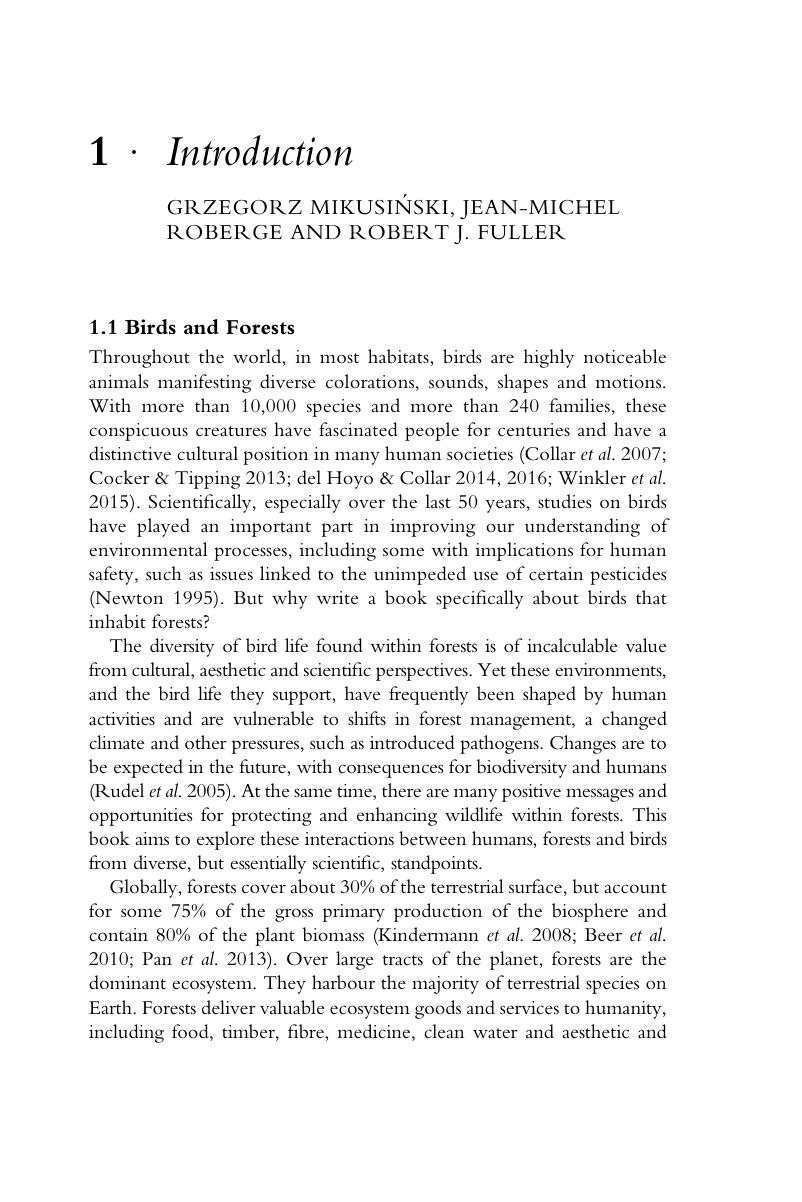Book contents
- Ecology and Conservation of Forest Birds
- Ecology, Biodiversity and Conservation
- Ecology and Conservation of Forest Birds
- Copyright page
- Contents
- Acknowledgements
- Contributors
- 1 Introduction
- Part I Forest Birds and Their Adaptations
- Part II European Forests and Their Bird Communities
- Part III Conservation and Management
- Species Index
- Subject Index
- References
1 - Introduction
Published online by Cambridge University Press: 15 March 2018
- Ecology and Conservation of Forest Birds
- Ecology, Biodiversity and Conservation
- Ecology and Conservation of Forest Birds
- Copyright page
- Contents
- Acknowledgements
- Contributors
- 1 Introduction
- Part I Forest Birds and Their Adaptations
- Part II European Forests and Their Bird Communities
- Part III Conservation and Management
- Species Index
- Subject Index
- References
Summary

- Type
- Chapter
- Information
- Ecology and Conservation of Forest Birds , pp. 1 - 8Publisher: Cambridge University PressPrint publication year: 2018

